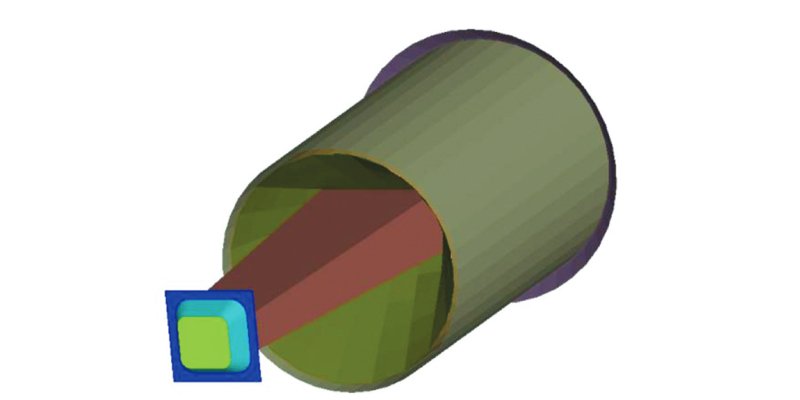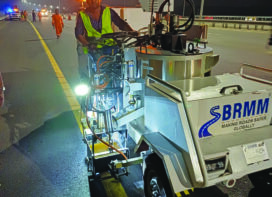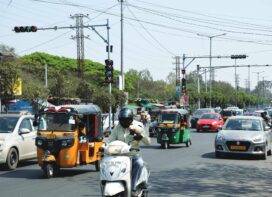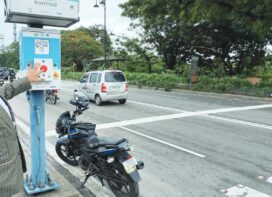
Dhaval Desai
Managing Director & CEO, Trafitek
Most of the design and development in Variable Message Signs have happened abroad specially in Europe and to a small extent in the US as they have a tremendous market potential and look at VMS as a lifesaving element of Roadside ITS. Secondly, they consider VMS as one of the most critical elements of Traffic Management with its ability to communicate directly to the road user in order to guide or warn him about traffic and road conditions.
Most of the research and development in technologies for VMS worldwide have been directed towards how the road user visualizes and memorizes the information for its journey use. For any VMS to be successfully deployed, there are two major aspects: functional and technical. The functional aspects cover two most important features which are visibility and readability during all times of the day. For the second, VMS should be designed for outdoor industrial use and work 24/7 in very extreme outdoor environments.
The EN12966*, is a compiled set of many EN sub-standards, adopted by the European Union including UK and very correctly followed by the NHAI/MoRTH are the appropriate standards used to fulfill the above functional and technical needs. EN12966 have three volumes – one covers the Product features, other covers various tests to be carried out in an EN notified lab and the last volume is about the testing to be done during production control. If all the above three are adhered as per the regulations, it guarantees a life of 15 years for the VMS which is the major aim of the standard. This is the reason all EN certified VMS’s are made out of aluminum alloy (AlMg3) used in aircrafts which never rust during their lifetime.
Most large international companies in Europe and the US have invested heavily in designing the most optimum optical lens over the LED for improved visibility and superior contrast ratio which is an important factor during daylight when the sun reflects on the VMS surface. Visibility and readability of most signs are compromised during day time when the sun is low and the VMS surface starts reflecting. These lenses divert the reflected light to the ground instead of the motorist thus creating an excellent contrast as good as the night time. These Prismatic lenses also protect the LED from the Sunlight as they are made of UV protected polycarbonate material. As LEDs scatter the light based on the viewing angles these covering lens reflect and refract the light internally towards the direction of motorists saving a lot of energy which is otherwise wasted. Such highly designed VMS use extremely low power. Low power systems which are 100 watt or lesser per sq meter have become the only choice of selection worldwide. Using Solar energy to Power VMS specially on deserted Highways where power is not available or constrained to be provided becomes most feasible with such low power VMS. These are truly fan-less and IP65 form all sides making them highly durable as the fan and ingress issues cause the most failures on the field VMS.
Also 3 in 1 SMD full color LEDs which integrate the RGB colors more truly than discrete LEDs have become the popular choice in the world now for better color index. Low power systems which are 100 watt or lesser per sq meter have become the only choice of selection worldwide
Quality of the product and design
One good thing the Indian government has done is to make VMS mandatory for all the Smart City and Highway projects. However, I can see a huge gap when it comes to the effective use of VMS in India.
Now any VMS to be effective there are two major facets. One is the design and quality of the product and the other is sending the right messages which can help the motorist to take quick and rightful decisions which would make his journey safer and faster.
For the first point, though NHAI/ MoRTH have given guidelines on VMS in terms of EN12966 certification or the MoRTH guidelines which refer to having a lens over the VMS, none of them are adhered to. Most of the VMSs in India are not EN certified from EN notified labs or they are partially tested for compliance only for a few technical parameters of the LED Board but not tested for complete product. This is the reason we see so many premature failures on the field plus poor readability.
We installed the first EN certified VMS in an Urban environment in Mumbai city and they are still working for last 12 year. If most of the VMSs are either off or partially off or have poor visibility, you then deprive the motorist of his rightful journey guidance and thus exposing him to risk.
The second biggest issue is what is displayed on the VMS. Many a time the VMS shows unwanted messages or videos including used for advertising instead of travel advisory or incident messages. The traveler gets lost in reading these repeated messages and when the real critical message is displayed, he tends to ignore it. Many Smart City projects put VMS as a requirement but actually ask for advertising display instead of VMS. High court orders are very clear that videos should not be displayed on the journey path of a motorist’s angle of driving vision as it will either distract him from looking at the ongoing traffic or he will automatically slow down or stop to watch it. A moving person cannot register a video unless he slows down or stops.
All the aspectsꟷ interface type, sign position, guidance information format — are important for an effective performance of a VMS. In terms of interface, worldwide standardized NTCIP protocol is used for Traffic equipment on the field and its communication to the command center. NTCIP has enabled the center to field communication and command/control of equipment from different manufacturers to be specified, procured, deployed, and tested in a standardized manner and making integration easy with least efforts.

Positioning the VMS
Position of the sign and what is displayed on the sign are very important for its effective use. The reason EN standard speak about low viewing angles is to make sure the light beam is more-sharper and also when the motorist is near the VMS (Less than 30-40 mtrs) the sign should not be visible/readable as he now should look in front instead of looking up as it will lead to accident.
This clearly means that advertisement signs used for the purpose of VMS are surely reasons to cause accidents if used for traffic and located as per traffic requirements.
In an urban area, the VMS should be at least 20 mtrs from the intersection stop line mounted at 5.5-6 mtrs as per the EN clearance height with a beam width of B6 (+/- 15 degrees). Only VMS used in parking use B7 standards (which is +/- 30 degrees) while advertisement signs are almost +/- 60 degrees which are not an EN norm.
Informing drivers about lane closures, accident ahead, poor weather, journey times to important destination, speed/lane control messages, important utilities within 200 mtrs on highways etc is important for helping him and making his journey safe and easy. And this needs effective use of technology.
Sending Graphic messages as much as possible as they convey a message three times faster than a text message makes it safer to read. Informing the driver about skiddy roads ahead due to rain, oil seepage, ice etc. or warning them about poor visibility in hilly terrains is absolutely essential needs of a motorists. Informing on speed violations or lane violation over the VMS with his number plate details deters the motorist than penalizing him. A study conducted in Ankara Road authority showed that by just giving warning messages with Number Plate details on the VMS reduced the violations and thus the accidents by 75%.
We had installed the first EN certified VMS with Aluminum cabinet and lens from our European partner in Mumbai and they are still working for the last 12 years. VMSs supplied by us to Efkon for the Delhi Agra corridor have been successful and is functioning for more than 10 years. We had to give no failure support for the first 5-6 years at all and now they are getting maintained with no spares. Other Installations are in Navi Mumbai, Panjim, Sundegarh, Kolkata (Gangasagar Project), Sambalpur project, Underpeth Expressway and others.
 TrafficInfraTech Magazine Linking People Places & Progress
TrafficInfraTech Magazine Linking People Places & Progress


